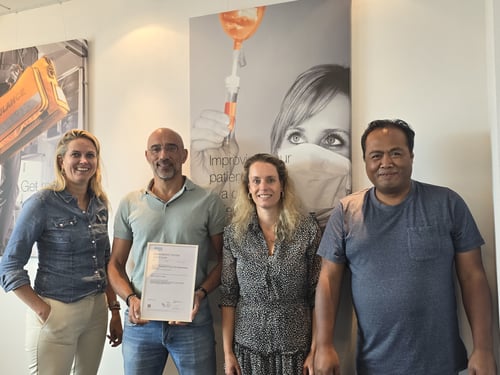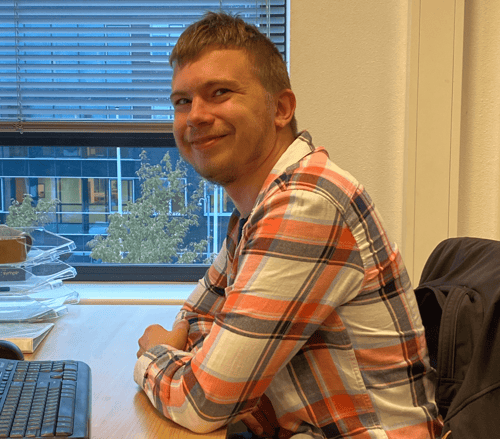Our healthcare professionals are at the front lines of a calamity, providing clinical care and psychological and emothional support to patients during the COVID-19 pandemic. What is your organization doing to ensure their mental and physical wellbeing under the enormous emotional pressure of the Coronavirus crisis? It’s well documented that healthcare professionals lacking sufficient care during and after disasters show short- and long-term symptoms ranging from anxiety to post-traumatic stress disorder (PTSD). Fortunately, most healthcare professionals recover. But the recovery is not without a struggle.

Beyond clinical professionals such as doctors, nurses, and advanced practice professionals, other healthcare staff feel the effects of a crisis. Consider that individuals who clean, cook, launder, transport patients, and work in administrative roles are also at risk. This is true whether they work within the hospital or in any affiliated care site including outpatient, group practices, and mental healthcare facilities.
>> Download our eBook "Safety is our joint effort!" which talks about the cultural aspects.
Recognize the symptoms
Healthcare staff are accustomed to working in emergency situations, but the nature of working during a prolonged, worldwide pandemic makes the COVID-10 crisis unique. The psychologically stressful circumstances include going to work daily while much of the world is on lockdown, exposing themselves and their families to the virus.
As a result, many healthcare professionals are struggling. The symptoms may include:
- Sleep problems and exhaustion
- Unusual mood changes
- Difficulty concentrating
- Feelings of insecurity
- Increased alertness
- Reliving of traumatic situations
In addition, research into the effects of crises on healthcare professionals shows that hyperalertia is a signal that should not be ignored. Hyperalertia and reliving a traumatic situation are the main triggers for PTSD. In addition, psychologically overburdened healthcare professionals often take their work home with them, using medications to sleep or alleviate stress symptoms. This increases the risk of making mistakes and increases the risk of burnout.
Emotions among healthcare staff are running high amid uncertainty of the scale and scope of the Coronavirus. As a result, there is a need to act now.
Do you think the way COVID-19 is being managed in your healthcare organization can be improved? Read the full story in our PDF. Download our special checklist and receive more then 30 points to consider within your team and management.
Second victims
After patients and their families, healthcare professionals are the so-called second victims of a crisis. Fortunately, the healthcare community has recognized the enormous impact that a calamity can have on clinicians and other staff. As a result, in 2000, the concept of second victims was put on the international agenda and further research has created awareness of the importance of organizing relief work around second victims. One successful solution is to offer peer support aftercare based on findings that colleagues can offer the best support to each other in experiencing devastating events.
Forms of support to help with long-term emotional pressure
Prevention and treatment of psychological stress start with encouraging healthcare staff to ask for help when they are struggling. It’s important to acknowledge their potential vulnerability and allow for the expression of emotions. Healthcare organizations can offer various forms of mental support, in line with the needs of the healthcare professional who is under long-term pressure
- Encourage colleagues to ask questions of each other: Guide them to discuss what is happening to them emotionally and discuss how they are reacting. Everyone responds differently to extreme stress, but it is especially important that they are encouraged to share feelings with each other. Support from colleagues often proves to be the best care, even after an emergency abates. It is important for administrators, managers, or and medical staff leaders to show leadership by showing emotions and vulnerability.
- Recognize the symptoms together;
- Debrief and connect with others at the end of each shift;
- Don't forget to include support staff and facility services. They work in the same environment, under the same conditions. - Match peer levels for increased support: Encourage “like” practitiones to support each other—nurses support other nurses, and physicians are matched with other doctors. The premise of this support tool is that like practitioners often experience similar traumatic situations and hold the same level of responsibility for resolving a case or situation. It’s important to use the right conversation techniques, which are specific for relief in shocking or emotional events. Consider extending this technique to any existing peer support format in your organization during the COVID-19 pandemic.
- Professional help: When an individual is experiencing PTSD or any symptoms that reflect a struggle to return to normalcy, professional help is warranted. Psychologists and psychiatrists can conduct the necessary evaluation(s) to determine the level of care required for the affected healthcare professional or staff member.
In addition to these forms of support, other forms of relief can be as minor as adjusting staff hours, changing the work shifts, or providing small tokens of appreciation such as staff meals. Resilience remains an important point of attention. That starts with compassion not just for patients and clients, but also for healthcare staff.
Special peer support application
Especially during these difficult times, healthcare administrators and professionals face difficult decisions. How do you know if you are making the right decisions?
Our peer support application facilitates the complete process—from identification of colleagues who need extra support, to registration by the employee themselves, connecting with a peer, or provision of the documentation and evaluation of the aftercare provided. You can read more information about the peer support application here.

%20(3)%20(1).jpg)


